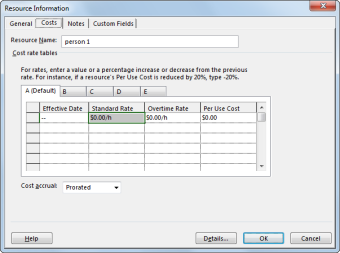Computer Program Costs


Understanding Technology Costs. Ongoing costs related to security measures, software updates, computer repair and general support are unavoidable. Computer Software Costs. Do you buy or lease computer software for use in your business? Do you develop computer software for use in your business, or for sale. Estimating Development Cost for a Tailored Interactive Computer Program to Enhance Colorectal Cancer Screening Compliance. Testing and development costs are.
How much does 'free' software really cost? That question remains at the heart of decisions made by CIOs and other technology leaders trying to decide what software and associated hardware will lead them into the future. Advocates of Linux and open-source products sometimes argue that because their software is distributed freely, it's self-evident that their software is more financially attractive than propriety software from companies such as Microsoft, IBM, SAP or Oracle. IBM suggests that a consensus is emerging that the total cost of ownership (TCO) of Linux is significantly lower than similar costs for competing proprietary operating systems (although it doesn't extend this argument to other open-source software that competes with its own revenue-producing software). Journalist accounts of the spread of open-source also tend to assume that the price difference is a critical competitive advantage. 'Because it is free,' declared a recent Business Week cover story, 'Linux is undercutting Microsoft much the way Microsoft has gutted its rivals with lower prices for the past two decades.' Yet anyone who looks into the problem of measuring the TCO of software quickly recognizes how murky this field can be.
'Free,' it turns out, doesn't necessarily mean cheaper. Adobe Cc Crack Keygen Mac. To assess the merits of these various claims, I recently reviewed a large sample of publicly available articles that purported to address the TCO of different software server platforms. The first fact to emerge was that most of the 84 documents I reviewed could not even be considered studies -- they didn't capture sufficient data on the full range of costs needed to evaluate TCO and often based their conclusions on the analysis of only a single firm.
Yet the handful of studies that were more comprehensive revealed that the debate about software TCO is more complex than is typically portrayed. To begin with, it appears that the price of software itself -- whether it's free or not -- is so low relative to the TCO that it may have little impact on the outcome of IT investment decisions for many purchasers. In most cases, the price of software proved to be less than 10% of the total cost of ownership.
Where costs do become significant for all types of software is in the level of staffing needed. By staffing, I mean the training, maintenance, support, administration and other personnel costs necessary to run the software package efficiently. These costs can add up to as much as 50% to 70% of a software system's TCO over its useful life.
Yet even staffing costs vary greatly depending on what type of workload is placed on the software and what sort of tools the software provides for users. For example, one study that compared Windows with Linux found that the Microsoft product's TCO was lower for networking applications but more expensive for Web applications. Automation Game Crack more. How a company uses the software tells you a lot more about TCO than does just the sticker price. The fact that people use software in different ways also points to one of the problems in using simple software TCO analyses to make purchasing decisions. Too often, people assume that all software provides the same benefits to users. But specific products and features that are essential to some users will obviously increase a particular software package's value relative to those of other packages.
Comments are closed.